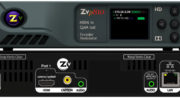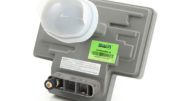You’re expanding your home DIRECTV system. You’ve gone over 16 tuners, and you’ve read our White Paper. You’re left with a nagging question though… with one run going to your guest house, is it better to have a separate dish, or a second multiswitch on the same dish?
First let’s get one thing out of the way. If you are running to a second location on your property, that’s 100% ok. You don’t need a second account for a guest house. The only times you need a second account is if it’s a different piece of property, or if you are leasing to someone on the same piece of property.
It’s also 100% ok to put a second dish on your property, but why would you do this? Maybe you have a separate guest house, garage, studio, or man cave. Rather than buying burial-rated cable, digging to required depths (after checking for other buried lines) and then splicing in regular cable for the last part of the run, it just makes sense to use a second dish for a second location. In some cases it can actually cost less than using the proper cable.
If you have a run that is 150′ or more from the dish, you might also be better off using a separate dish. Over 150′, DIRECTV whole-home starts to break down, and over 300′, you’ll start to lose satellite signal altogether unless you use an amplifier. Over 500′, you may find the cable from your SWM to your receiver has just too much loss to overcome most amplifiers. In cases like that, a second dish will help balance things out.
Another option is to run a second set of lines from the dish to a second SWM. In a case like that you can amplify the signal over and over for much longer runs. The problem of course, is that you’re using four times the cable. In cases like that, we also recommend a polarity locker to power the dish because having two SWM switches at different distances could be a potential problem if both are supplying power to the dish.
Of course the decision is yours, but when it comes down to it, with a second building it’s usually better to have a second dish, while adding capacity to the same building generally only requires a second SWM.





